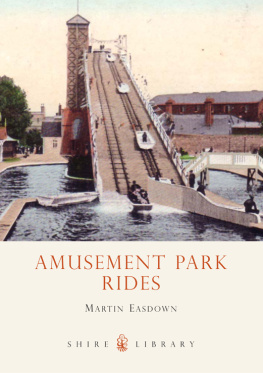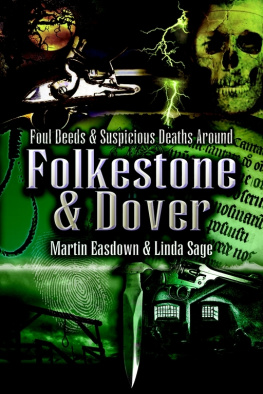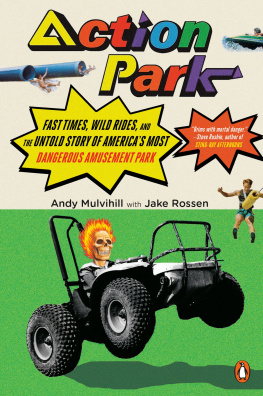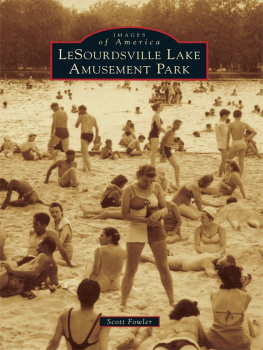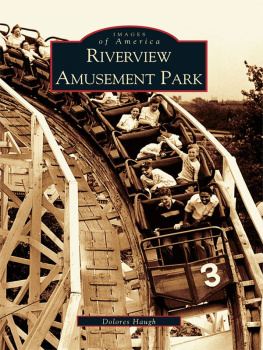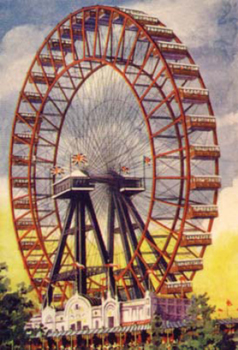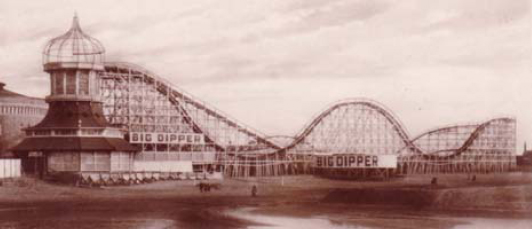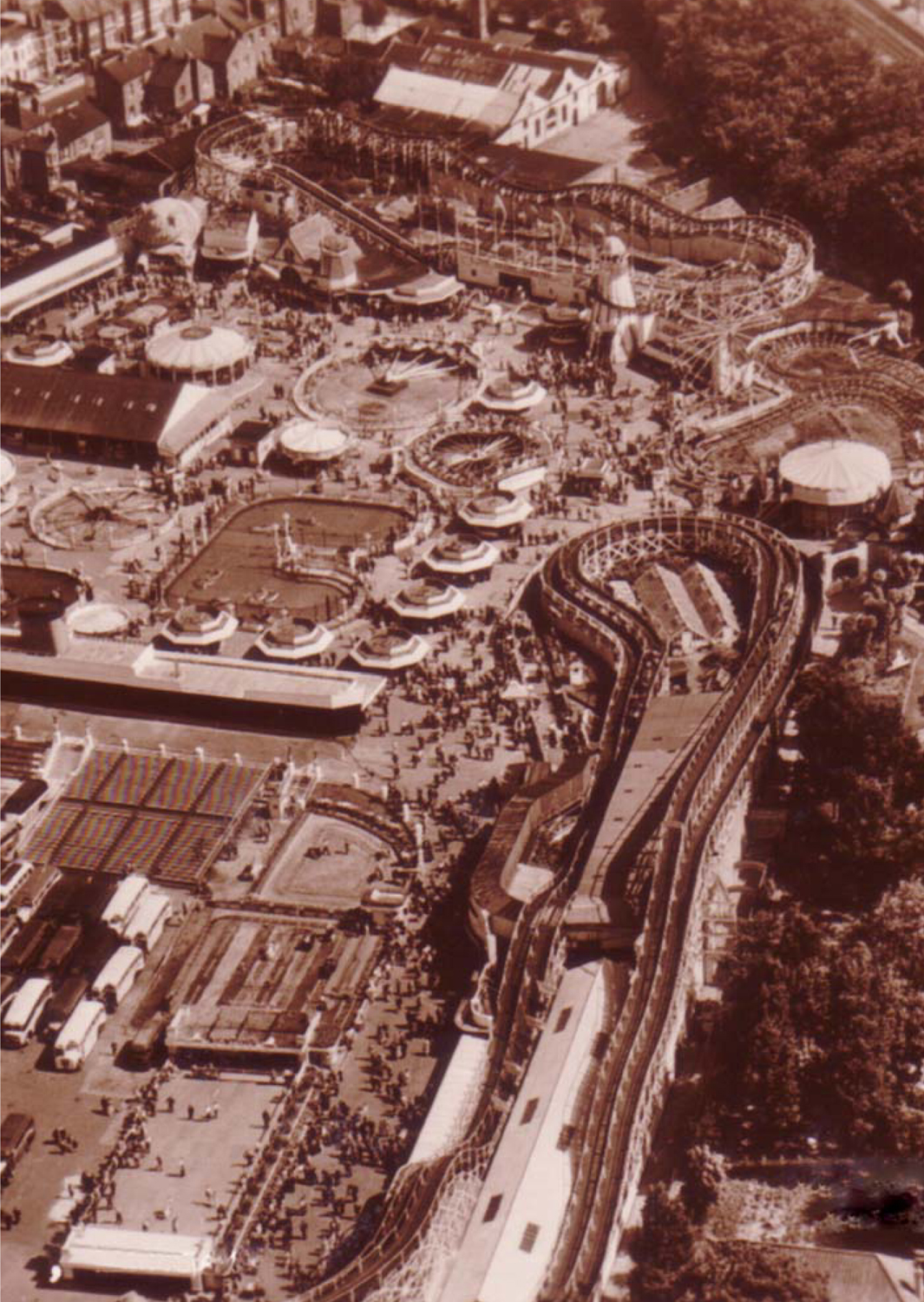AMUSEMENT PARK RIDES
Martin Easdown
SHIRE PUBLICATIONS
The Ferris wheel at Earls Court, London, was built in 1895 and was based on the one erected by George Ferris two years earlier in Chicago. The wheel was 300 feet high and could carry 1,200 people, but was demolished in 1907.
CONTENTS
The Big Dipper on Blackpool Pleasure Beach was opened in the 1920s, and is still in operation today.
An aerial photograph of the Dreamland amusement park, Margate, taken in the 1930s. Prominent in the foreground is the scenic railway, and the other rollercoaster seen is the Racing Coaster, built in 1923. The formal gardens and wooded area were survivors from the Hall-by-the-Sea days.
INTRODUCTION
A MUSEMENT PARKS are a combination of the frivolous and the fantastic a world of escape from the pressures of life. They fascinate people of all ages through their total dedication to the pursuit of fun. The thrill of the rides is just part of the experience: the bright lights, the various sounds and the smell of the food stimulate all of our senses.
The static amusement park in Britain evolved from the travelling fairground at the end of the nineteenth century, following the introduction from the United States in the 1880s of the Switchback Railway, the first commercially produced rollercoaster. The concurrent huge growth in the popularity of the seaside holiday led to most amusement parks being established in coastal resorts, either in their own right (such as Blackpool Pleasure Beach), or as part of multi-entertainment centres (such as New Brighton Tower, or the Kursaal at Southend-on-Sea). The continued introduction of new rides, usually from the United States, led to a period of rapid growth for the parks through the Edwardian era and into the inter-war period. However, following a successful period just after the Second World War, their popularity declined in the 1960s and 1970s, when more people were taking foreign holidays and enjoying other leisure activities, such as watching television. Many of the parks were closed, but the arrival of a new generation of thrill rides led to the opening of inland theme parks, easily accessible by car, such as Alton Towers, Thorpe Park and Chessington World of Adventures. Such places, and also the long-established Blackpool Pleasure Beach (one of the few surviving seaside amusement parks), are among the most popular visitor attractions in the United Kingdom.
Most of the rides described in this book were placed in permanent amusement parks rather than travelling fairgrounds. Some rides were a feature of both, such as the dodgems and the Caterpillar, and a few of the more popular examples have been included. However, other features of the amusement park, such as the sideshows, amusement machines, miniature railways, special exhibitions and wall-of-death rides, are not described here. For many, the highlight of a visit to an amusement park is a ride on a rollercoaster, the origins of which can be traced back to ice slides and primitive wooden railways.
The Russian ice slides, as seen here at St Petersburg in 1884, were a forerunner of the rollercoaster.
EARLY ROLLERCOASTERS
I CE SLIDES had long been a popular pastime for Russians in winter, and by the sixteenth century slides that were lined with wood and featured slopes and drops had been developed in Russia. Passengers rode down the slides on a block of ice lined with wood and wool for comfort, or on a wooden box, steering it by means of a rope. A description of one of the slides was given in the Pall Mall Gazette on 13 January 1870:
An ice-hill is a steep slope made smooth and paved with blocks of ice down which you are precipitated in a little wooden box, placed on rails, under the guidance of an expert skater. But the pavement of ice to be perfect should be washed over with water, and it is of course desirable that this wash of water should freeze.
The Russians also developed a crude wooden ride on the same principle as the ice slides, such as the switchback-type gravity railway built in 1784 in the Gardens of Oranienbaum in St Petersburg. The Russian royal family enjoyed wooden rides placed in the royal parks, and on 24 November 1838 the Northern Star and Leeds General Advertiser reported:
A Russian Court Ball. On returning from the ball, we found the emperors young children, the two grand dukes Michael and Nicholas, with their governess and preceptors, assembled in the outer room, where a large Montagne Russe (Russian Mountain) had been erected for their amusements.
French soldiers serving in Russia during the Napoleonic Wars saw the wooden rides and took the idea home. Similar structures to the Russian ones were erected in the Baujon Gardens in Paris (les Promenades Ariennes) and at Belleville (les Montagnes Russes). Both rides featured wooden cars, which could reach speeds of up to 30 mph as they sped down a pair of parallel tracks, locked into the grooves of the wooden guide rails, before curving to the left and right as they reached the bottom. On 31 October 1816 Poulsons American Daily Advertiser reported:
A new diversion is now fashionable at Paris. In a garden situated at the Barrire du Roule, there have been erected what are called the Russian Mountains. These are inclined planes, to imitate the ice-hills of Russia, and the amusement is to slide down this abrupt descent on a sledge. The rapidity of the motion, which takes away the breath, and a noise resembling a burst of thunder, do not deter the adventurous belles of Paris from partaking [of] this new amusement.
The Russian Mountains rides also spread to Britain, although there are few references to them. One was erected in 1823 for a performance of Harlequins Trip to Paris at Sadlers Wells, on which the public were allowed to ride, and another was briefly sited at the top of Newhall Hill, Birmingham, in 1832, which was remembered in a letter to the Birmingham Daily Post on 1 March 1871:
First of all there was a stage or platform erected, in an oval shape, about six feet wide, with four ascents to an elevation of about thirty feet, also four descents to the lowest parts of the stage, which, I think, was about three feet from the ground; on this there was placed what answered for rails, but I cant recollect whether they were wood or iron. The carriage was a kind of large perambulator, to hold two, with four small wheels and hollow tyres. The axles being made extra long, the wheels were a foot or more from each side of the carriage. This, I presume, was to give a surer balance. There were two flights of steps to the starting stages, one at the east and the other at the west end. There was no steam engine used. The grand opening day came at last; and I saw men and women start from the elevated stage, in what appeared like a gig body. Down they went; up they came; down again, and up again all this being seen from the outside. Well, the happy day came when a companion and I entered the sacred Mountain ground. Up at the starting stage we soon arrived. We were soon in the perambulator, and strapped in, and told not to be frightened, and to hold our breath. The velocity with which we went down the descent took us nearly to the top of the ascent; but as we neared the top, to make sure we did not run back, something caught on our carriage underneath, which made a click-click sort of a noise, steadied us over the elevated bridge, then down we went and up again, and might have done so all day by paying. The Russian Mountains remained on the hill for months, then vanished, leaving nothing behind but the recollection to one who has battled with the world, and views the past use of Old Newhall Hill with great pleasure.

